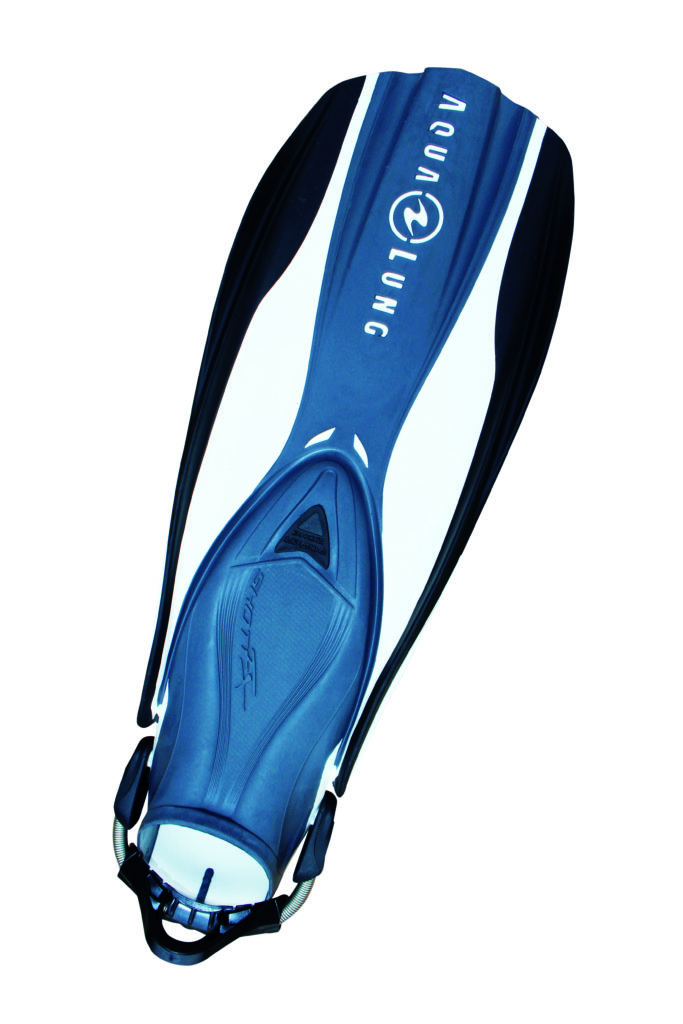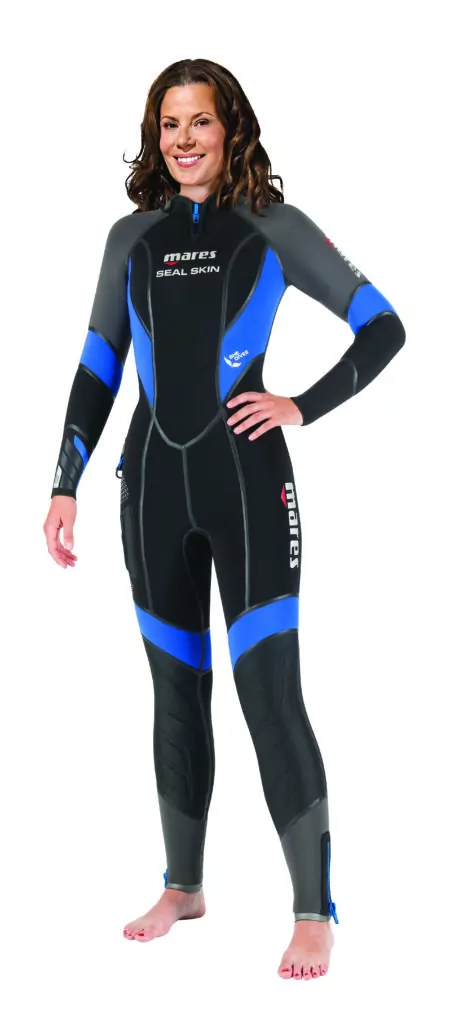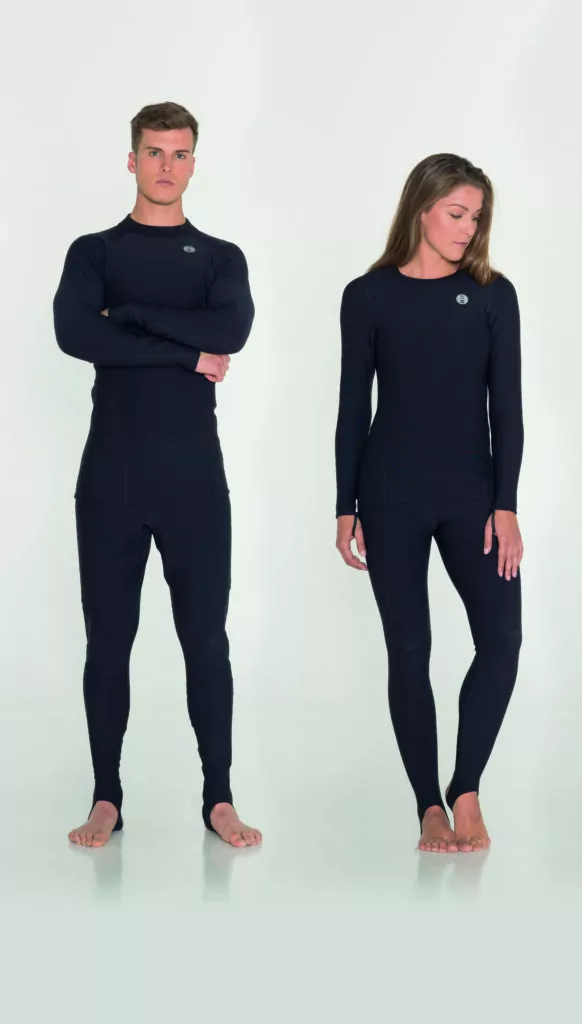For new divers especially, it can be a little confusing to decide on priorities, makes and models when buying their own equipment. Our experts are here to help
Also read: Dive Like A Pro: Hardboat diving
’Masks can be frustrating’
Mark Powell from TDI/SDI: “More often than not, new scuba students have no idea what their first set of gear should cost. The best answer isn’t so much about monetary value as getting the gear you need to make your early experiences encourage you to want to continue with scuba.
“The £100 mask isn’t guaranteed not to leak or fit perfectly, the £150 fins aren’t guaranteed to fit like your favourite shoes, and buying pre-made kit might not be the right answer either.
‘The cost of your first set of gear is more likely to be dictated by what works for you as a new diver than any particular price-tag. Masks, snorkels, fins and even weights all have their particular appeals. Colour should be secondary, as should ’it looks cool’. Keeping up with the other guy or girl who has several hundred dives is also secondary, or whether your buddy has the item.
“Every manufacturer produces a multitude of shapes, sizes and colours of mask, but first and foremost should come fit and comfort. The colour won’t stop a mask leak; the shape needs to suit your face to help produce a good seal. Once you find the mask that fits your face, only then see if it’s available in whatever colour you want.
“Masks can be frustrating. You might need to try several before you find the right one, but it will make your diving experience so much better. Buying last year’s model can sometimes save you several pounds.
“Surface marker buoys are probably among the most-underrated pieces of diving equipment in the scuba industry, but they are extremely important. They come in only a handful of colours and a few slightly different size variations. They can be the simplest pieces of equipment to use or complex enough to connect to external air sources.
“As a new diver, you don’t need anything over-complicated. You need an SMB that you can manipulate (with or without gloves) and that is easy for you to get air into. Some have oral-inflation tubes and some have valves that can be a little challenging, depending on your manual dexterity and the strength of your hands. Check them out thoroughly in the store and make sure you understand how to work it.
“The cost of your first set of gear will equal what works for you, be it a few pounds or several. Set a budget, comparison-shop and buy what fits best, is comfortable and works for you.
“A final word about purchasing scuba gear from friends or social media – be very, very careful. Unless you know first-hand how the equipment has been maintained, or you can lay your hands on it, don’t buy it. Be safe, support your local dive-shops and, with the help of a dive professional, you’ll be set up for success.”
The dive-club perspective
BSAC National Diving Officer Dai Atkins: “So you’ve taken a dive and you’ve caught the bug. The branch membership secretary has surgically removed club fees from your wallet and now you’re on the hunt to accrue kit to take your newfound hobby to the next level – where do you start?

“The local dive-shop becomes an Aladdin’s Cave of shiny things, blow-up things, engineery-looking things, stuff with dusty ‘special offer’ signs on them – but from the shopping-list your new club mates have given you, how do you tick it all off without having to visit the mortgage broker, hide stuff from the spouse, or avoid being sold technology from the last century? And which is the priority item?
“Firstly, do you need it all? If you just joined a club it might have several sets of kit that you can borrow or loan for a small maintenance cost that might just save you several hundred pounds while you decide in which direction your new hobby will take you. Clubs frequently have the core scuba kit such as cylinders, regulators, BCs and weights, and it’s an opportunity to try out some different models and styles before you work out what’s comfortable for you.
“Which are the quick-fix items you can obtain quite cheaply? Well, club masks, snorkels and fins are often a bit grotty-looking when the kit officer pulls them out of the club bucket of ‘disinfectant’, and you can always make use of these more personal items if you take a beach holiday where you fancy some snorkelling. If you have receding eyesight like me, you might require special lenses in your mask, so this will become something specific to you.
“Suits are a tricky one. If you’re in the UK, at some stage you will probably need a drysuit, and this requires a bit of training. You’ll want to be comfortable in it so that it doesn’t make your diving needlessly hell, but to begin with you can buy a cheaper wetsuit or semi-dry to hone your other core skills before moving on.
“During this time you might have found a club buddy who is around the same size as you and who has one you can try to see if you like it. Or that buddy might have already eyed you up because they have a cheap suit for sale!
“Reels, SMBs, line-cutters and torches come in a range of different styles – and the clips, oh god, the clips! The latter are helpful to stop you losing your new toys – it’s good to have something to hold them into your BC pocket in case you need your hands to do something else.
“One of my first items was a multi-gas dive-computer. It wasn’t the cheapest outlay but it did prove a sensible early buy and lasted many years as I looked to future-proof myself.
“Some clubs hold ‘bring and buy’ sales to raise money for their maintenance funds and these provide an opportunity to pick up items for a fraction of the cost. As always, with any secondhand kit you buy, seek reassurance that it’s in working order and fit for purpose. You can always ask for servicing records or receipts, or take someone with you to check the kit over and give it the OK.
“Oh, and don’t forget all your spares…!”
Questions to ask yourself
Garry Dallas, RAID UK & Malta Director of Training: “After you’ve bought the dive bus, the house with the large air-conditioned garage and every latest piece of dive gear and antiques to fill it, you wake up and smell the coffee. Rationally speaking, and with a budget in mind, you need to buy the most important piece of equipment first: confidence!
“When you go to your first ball wearing your best outfit, you need to feel confident. Confidence comes in various forms for different people – given a £500 budget for new dive-gear, ask yourself which of the following means the most to you:
- The piece of mind that the regulator set works perfectly under water, has gadgets, is shiny and has never been breathed from.
- That the wet-, dry- or undersuit has never been ‘used’ by anyone else and fits like a glove.
- That the mask, fins, snorkel and dive-knife fit perfectly and makes you feel a bit like James Bond or Ursula Andress.
- That the state-of-the-art BC and tank make you really feel like a diver, because nobody else would own one.
- That each piece of equipment gives you confidence. Hiring any of these items might not give you the effect you want, or work as well as hoped, so a decision needs to be made.
- That for you and those you care about, your life is important! So in prioritising equipment reliability would be top of your list, and then practicality, comfort/fit and only then looks.
- Would you buy something secondhand? Well, if doing that compromises any of the above the answer should be no, because it would compromise your safety in the water.
- If it’s not fit for purpose, would you let a loved one use it? Be savvy, be safe!”
Mask, fins and drysuit
GUE’s John Kendall: “For me, the most important bits of diving equipment to own are those that you are physically wearing. So it makes a lot of sense for you to own your own mask (one that fits properly) and your own exposure protection. In the UK I very regularly see people taking classes in badly fitting and often leaking rental drysuits.
“A drysuit is not a complicated piece of equipment but it does have to fit you properly, with the correct-sized boots and seals. A badly fitted suit will be uncomfortable and could well be dangerous. So that to me is the second item for coldwater divers to buy.
“The final part of the beginner’s kit should be a decent set of fins. You shouldn’t try to buy these before getting your suit, because you’ll need them to fit the boots on the suit. Pretty much everything else can be sensibly rented.
“Moving past these basics, I would buy a proper wing and backplate set-up. Look for a wing designed specifically for single-tank use (anything that suggests that it’s good for both single tank and twinset isn’t normally any good at either), and then a regulator set.”
My favourite piece of kit
Vikki Batten, PADI Examiner, Course Director & TecRec IT: “If you’re diving in the UK, a drysuit is usually one of the first items to purchase. I started with mask, fins and snorkel before my Open Water Diver course, then prioritised a drysuit and undersuit because they need to fit really well, and you can then be responsible for making sure that they are well-maintained.
“Even now, when I travel as a PADI Examiner, the one piece of kit I always take is my drysuit. It’s my favourite piece of kit – everything else I’m happy to hire if necessary. Don’t forget to get proper training in the use of a drysuit and lots of practice in easy conditions before you extend your limits.”
An eye to the future
Emily Petley-Jones, PADI Regional Training Consultant: “Purchasing new kit is incredibly exciting, especially when you have just been certified! When considering which items to purchase, consider the sort of diving you think you might enjoy, and where you plan on diving.
“Start out by purchasing kit for your comfort in the water – getting a mask that fits your face well would be the first purchase for most divers. Items such as hoods, gloves, knives, torches, SMBs and reels are also great to purchase early on, because they work when diving both in the UK and overseas.
“If you plan on going on lots of diving holidays, a good dive-computer is a sound investment. Again, it’s worth thinking ahead with this, because if technical diving is a temptation, you should consider the features you should be looking for beyond recreational diving and nitrox.
“After that, prioritise what you purchase based on where you plan to do most of your diving and the type of diving you will be doing. The type of exposure protection you choose can affect the size of fins you might need (drysuit boots are larger, so you might need fins with a larger foot-pocket), so purchasing these together is a good idea.
“Some regulators are designed to be lightweight for travel, while others are designed for optimum use in cold water. Likewise, there are travel BCs available, while others have lots of weight-pocket space, which makes them better suited for drysuit diving.
“You might also be tempted to look into other options such as sidemount diving, or getting a twinset. The key is to research your options and work out what will be best for you.”
My top five
Jason Sockett, PADI Quality Management consultant: “I remember the day I signed up for my first diving course. I lived in Oman and was very excited to finally be able to dive the amazing reefs I had spent so many years looking at from the surface.
“I went to a local sports shop, because the dive-centre didn’t stock equipment. There I bought my first set of mask, fins, snorkel, a mesh bag and a small knife. Had to have the knife. I felt so cool, and part of the diving community.
“So you’re about to buy your first set of equipment, what do you get? My advice would be to speak first to your instructor and local dive-centre. They will be able to advise you on the best equipment for you and for the region(s) where you plan to dive.
“They might also may be able to let you try some equipment during your course. I’m a big believer in supporting our local dive-centres, and generally they have a wealth of knowledge about products.
“My top five items:
- The mask has to be number one. If it fits and is comfortable, you will enjoy your diving so much more.
- Wetsuit or drysuit – there is nothing worse than feeling cold, or using a rental wetsuit that doesn’t quite fit. Plus, other divers either pee in their wetsuit, or lie about peeing in their wetsuit!
- A timing device. This can be a simple watch or a basic dive-computer. If you buy a watch, make sure it has a rating of 200m – not that you’re going to those depths, but the last thing you want is for your watch to flood.
- “SMB and reel – the dive-centre will be able to advise you on the best options. Remember to practise using them on your dives.
- Mesh bag or dive-bag – you really don’t want to be on a boat with your dive-equipment all over the place.”
Photographs by Mark Evans
Also on Divernet: Packing Gear For A Dive Trip, What To Check Before Diving, Night Diving, Developing Core Skills, Coldwater Diving, Caring For Diving Equipment, Calling A Dive, Connecting On The Dive




